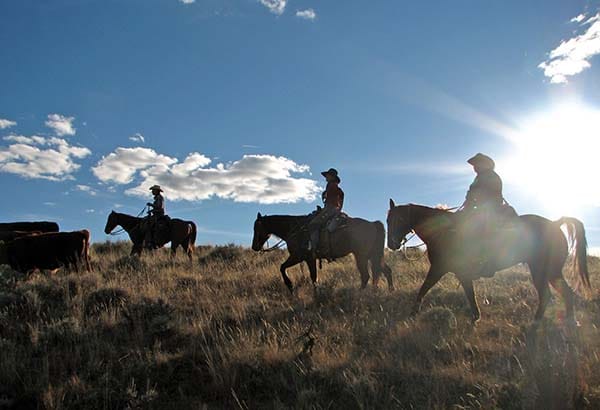
Montana’s incredibly popular Habitat Montana program is a favorite target of state lawmakers because it allows the state to purchase land for wildlife through a fund that hunters pay into.
What’s often left out of the conversation is the contribution that Habitat Montana makes to traditional farm and ranch operations. That’s because Habitat Montana primarily funds conservation easements that protect working agricultural lands – which tremendously benefit wildlife – and can help farmers and ranchers add to their operations and stay on the land.
This month that was well illustrated through four major conservation easements that came before the Montana Fish and Wildlife Commission. The proposals total 33,800 acres on four ranches located in central and eastern Montana. These stunning landscapes include key habitat for mule deer, antelope, elk and numerous other game and non-game species.
Among those are sage grouse, a native prairie grouse that was nearly listed as endangered last year. The U.S. Fish and Wildlife Service opted not to list the bird, thanks to extensive state and federal conservation plans aimed at protecting and restoring crucial sage grouse habitat in sagebrush-steppe environments. One of the projects proposed this month – the Machler Property in Fergus County north of Roy – includes nine sage grouse leks. The easement would protect 2,700 acres of the ranch that is located in core sage grouse habitat.
There’s another key element to these easements. They include a public access component to the properties that allows public hunting. And they also have the potential to improve public access to adjoining public lands, which would create more public hunting opportunity.
Another easement, the Rumney Foothills located near Cascade, would allow the rancher to expand the operation by purchasing more property. The area is comprised of foothill grasslands that provide important winter range for elk and mule deer, as well as riparian and shrub habitats where white-tailed deer thrive. In total the easement would protect 7,512 acres in two areas.
Montana lawmakers who don’t like Habitat Montana sometimes use language that FWP is trying to buy up the whole state. They state that FWP owns too much land, referring to our system of state Wildlife Management Areas that are strategically located in key wildlife corridors or on winter range. And last session, the Legislature through the budget process limited the ability of Habitat Montana to be used for new purchases, with the exception of those that were already in negotiations. Several lawmakers have called on the program to be ended entirely.
That would be bad for Montana’s hunters, anglers and wildlife watchers. It would be bad for the numerous businesses that thrive because of our abundant wildlife and the public lands that support it.
And as these projects demonstrate, it would be bad for our agriculture industry as well.
Nick Gevock is the conservation director for the Montana Wildlife Federation.

